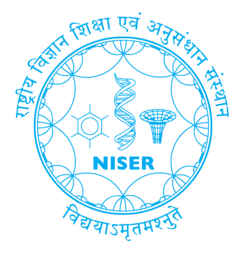Partner Groups
Partner Groups can be established in cooperation with institutes abroad if outstanding post-docs return after a research stay at the Max Planck Institute to a leading institute in their home country and continue their research on a topic that is also of interest to the MPS.
Inter-University Centre for Astronomy and Astrophysics (IUCAA), Pune (India)

Head of the Partner Group: Prof. Dr. Durgesh Tripathi
The main scientific objective of this collaboration is to study the dynamics and coupling of the solar atmosphere with emphasis on eruptive phenomena on the Sun, heating of the upper solar atmosphere i.e., corona and chromosphere, and sun-climate relationship. The problem of solar coronal and chromospheric heating has been at the forefront of astrophysics research since its discovery in 1940s. Despite major improvements in theoretical modelling and observational capabilities, the solution remains illusive. Additionally, large-scale solar eruptions such as solar flares and coronal mass ejections have direct consequences and potentially devastative impact on space weather and geo-space climate. The occurrence of these highly energetic phenomena has proven to be highly difficult to comprehend. In addition, the UV, EUV and X-ray radiation from the Sun play an important role in shaping our longer-term climate pattern on Earth. In particular the UV radiation from the Sun is of prime importance as it heats the Earth’s Stratosphere and Mesosphere, regulating Ozone abundance and influencing dynamics of Earth’s climate.
Institute of Space Physics and Applied Technology, School of Earth and Space Sciences, Peking University (China)

Head of the Partner Group: Assistant Prof. Dr. Hui Tian
The research of this partner group focuses on several types of small-scale dynamic events in the lower solar atmosphere as well as the lower atmospheric response to solar flares. NASA’s Interface Region Imaging Spectrograph (IRIS) mission recently discovered three types of small activities in the lower solar atmosphere: so-called IRIS bombs in active regions, transition region bright dots in sunspots, and network jets outside active regions. These events likely play an important role in heating of the solar atmosphere as well as in the mass and energy supply to the solar wind. A deeper investigation of these newly discovered and poorly understood events therefore promises new insights into the workings of the solar atmosphere. The planned research will determine the role of magnetic reconnection in the energization of the lower solar atmosphere, and characterize the dependence of these dynamical events on the process of magnetic flux emergence. Recent high-resolution observations from both space and ground-based observatories have revealed great details of the energy deposition processes in the lower atmosphere during solar flares. As part of the research activities of this partner group, we also investigate flare heating mechanisms by charactering these fine-scale flare dynamics.
National Institute of Science Education and Research (NISER), Bhubaneswar (India)

Head of the Partner Group: Dr. Guneshwar Thangjam
NASA’s Dawn mission explored Ceres, the largest asteroid and the only dwarf planet in the inner solar system and a unique volatile-rich world that bears important clues on early solar system history. However, whether Ceres formed at the present heliocentric location in the inner solar system or migrated inward from the outer solar system is still ambiguous. In order to address this scientific question, the partner group investigates the spectral and geomorphologic characteristics using data from Dawn’s Framing Camera (FC), that was developed and built at MPS, and from Dawn’s Visible and Infrared Spectrometer (VIR).
Universidad de Mendoza, Mendoza (Argentina)

Head of the Partner Group: Dr.-Ing. Francisco Iglesias
Understanding and predicting the activity of the Sun is of fundamental scientific and practical importance. The Sun can be used to validate stellar models, it is a natural high-energy physics laboratory, and greatly influences Earth's climate, near space conditions and many critical human technologies (artificial satellites, electrical distribution lines, defense systems, etc.). The main driver of the Sun's activity is its magnetic field. The Partner Group’s research goal is to detect and characterize these fields at their smallest spatial scales, which are key to answer crucial open questions in solar physics. To accomplish this, it is planned to contribute to the instrumental development and scientific data analysis of the solar magnetometer SUSI (Sunrise UV Spectropolarimeter and Imager) that will measure the largely unexplored ultraviolet spectral regime. SUSI is a valuable payload included in the next flight of the successful, balloon-borne solar observatory SUNRISE, developed at MPS.
Observatoire de Paris, Paris (France)

Head of the Partner Group: Prof. Dr. Jordan Philidet
This Partner Group aims at improving theoretical modelling of the inertial modes of the Sun, and developing new techniques for the exploitation of solar inertial modes data to constrain the dynamical and thermal properties of the Sun's convective zone. The cooperation will also involve joint work related to the validation of the stellar analysis pipeline of the upcoming ESA PLATO mission.
















